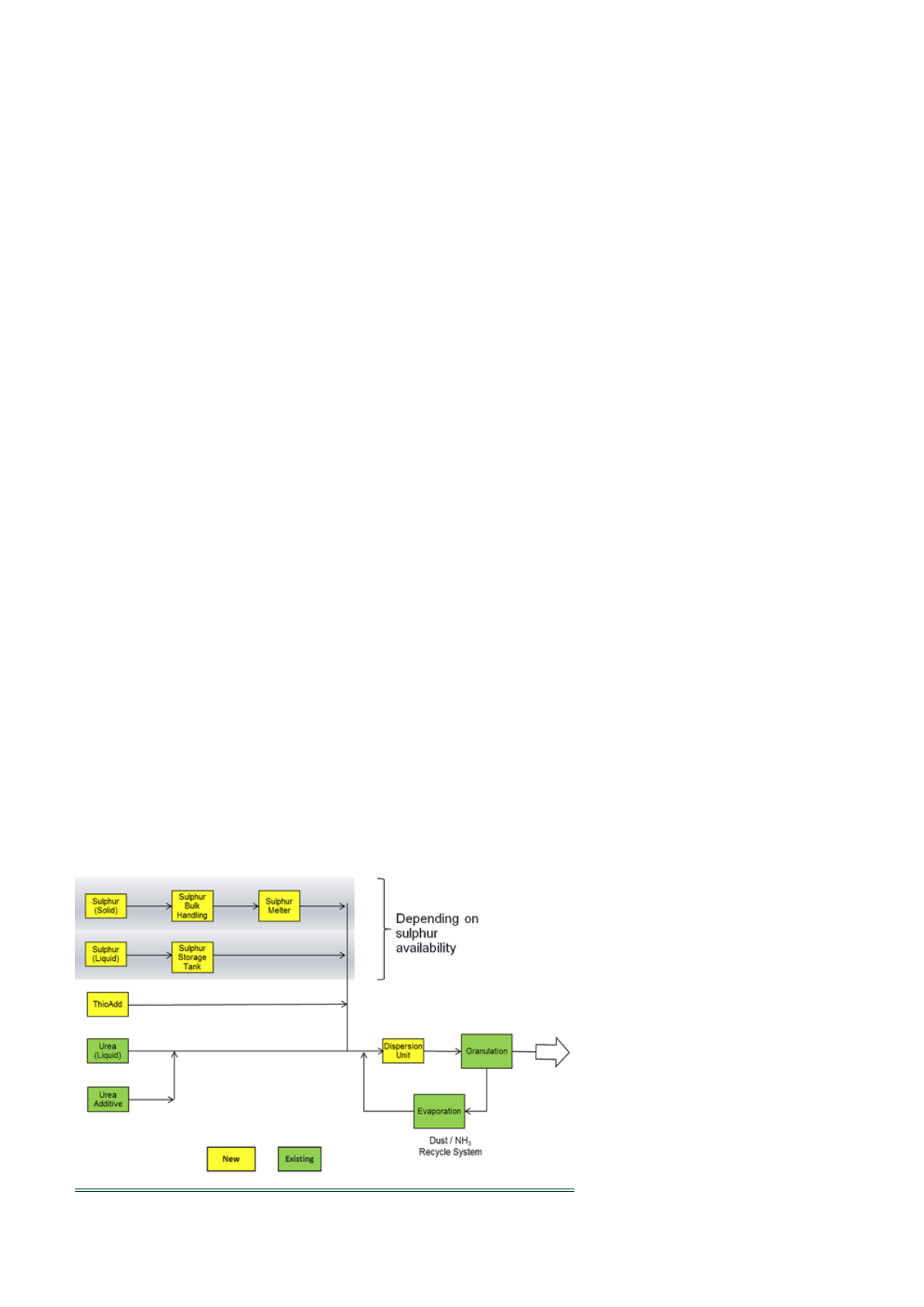
36
| WORLD FERTILIZER |
NOVEMBER 2016
necessary to produce this fertilizer in a UFT fluid bed
granulation plant.
Why sulfur-enhanced urea?
Sulfur is a plant macronutrient and it plays an important
role in crop development. In recent years, the importance
of sulfur has become a significant topic in the global
agricultural community, due to the rising incidence of soil
sulfur deficiency. Over the past several decades,
increasingly stringent fuel desulfurisation policies have
been implemented around the world in order to reduce
air pollution. These policies have been extremely
successful, but have simultaneously resulted in less
atmospheric sulfur deposition into agricultural soils.
Because sulfur is a vital crop nutrient, this reduced
deposition has meant that, today, many farmers must
provide additional sulfur to their crops in order to
achieve optimal yields.
The fertilizer industry has responded to the growing
sulfur deficiency with the introduction of various sulfur
containing fertilizers. However, these innovations have not
been enough to eliminate the deficit; and the sulfur gap
continues to grow. In 2015, The Sulfur Institute estimated
that approximately 10 million t more of sulfur were taken
out of soils than were replaced.
As the most widely used fertilizer globally, both
geographically and by volume, urea is seen as an ideal
sulfur delivery vehicle to help respond to the global soil
sulfur deficiency.
What is Urea-ES technology?
Urea-ES technology enables fertilizer producers to
incorporate micron-sized particles of elemental sulfur into
urea, as a convenient and cost-effective way of providing
plants with the sulfur nutrition they need.
Elemental sulfur is the most concentrated form of
sulfur and, as it is readily available, sulfur is an economical
source of plant nutrient sulfur. However, since plants take
up sulfur nutrient in the form of the sulphate ion,
elemental sulfur must also be oxidised by bacteria in the
soil before it is available to the plant.
To accelerate this oxidation process, Shell has
developed a process that micronises the elemental sulfur
into fine particles of, on average, less than 25
µ
m,
significantly increasing the surface area accessible to soil
bacteria (Figure 2). This way, the elemental sulfur can be
oxidised across the entire crop growth cycle, helping to
offer a season-long supply of sulfur nutrition.
While the Shell technology safely and efficiently
combines urea and sulfur into a stable emulsion, the
emulsion must then be granulated in order to be applied
to soils. In early 2015, Shell and UFT joined forces to
develop an end-to-end Urea-ES fluid bed granulation
process for producing granular sulfur-enhanced urea.
The value of sulfur-enhanced urea
Urea-ES technology has the potential to create meaningful
value for the fertilizer producer, through the distribution
chain and finally at the farm level.
At the fertilizer manufacturing facility, replacing a
portion of higher-cost urea liquor with lower-cost sulfur
can reduce overall input costs to the manufacturer. In
addition, in markets that recognise the importance of
sulfur as a plant nutrient, fertilizer producers may be able
to sell sulfur-enhanced urea at a premium price over
regular urea. Premium pricing for sulfur-containing
products is well documented in markets such as North and
South America, and Europe, for example.
Incorporating elemental sulfur into urea can produce
highly nutrient-dense formulations, since elemental sulfur
contains >99% nutrient. Compared to plain urea, which
contains 46% nutrient (46-0-0), Urea-ES with a formulation
of 40-0-0-13S contains 53% nutrient. Urea-ES with a
formulation of 35-0-0-24S has an even higher nutrient
density of 59%. For this reason, Urea-ES products have the
potential to save transportation and handling costs
throughout the distribution chain.
At the farm level, sulfur-enhanced fertilizers have the
potential to increase crop yield and improve crop quality
by offering plants a more balanced nutrition. Agronomic
trials performed since 2014 have shown equivalent
and/or improved performance over existing nitrogen and
sulfur fertilization programmes. In
addition, the product offers farmers a
convenient, all-in-one source of
nitrogen and sulfur, which does not
require blending.
Simplified Urea-ES process
description
The production of Urea-ES takes place
across several steps, and involves the
combination of molten sulfur,
concentrated urea solution, and a
proprietary additive called ThioAdd.
ThioAdd is required to produce a
stable mixture of molten urea and
molten sulfur. Without it, due to the
significant differences in density and
surface tension between the two
liquids, a stable mixture cannot be
achieved, and the result is a visible
Figure 1.
Basic flowsheet for a sulfur-enhanced urea granulation plant.


